Climate change causing glaciers to melt
22 January 2013
French scientist Antoine Rabatel and his team of researchers from around the world have been studying glaciers in the South American Andes for several years. The Andes are the longest continental mountain range in the world. Antoine found that many of the glaciers have been melting faster and faster since the 1970s, something that he and his team believe is due to climate change. Humans are producing gases like carbon dioxide, which trap heat in our atmosphere, meaning they are causing the Earth to heat up very quickly – a process called climate change. Studies have shown that the temperature across the Andes has increased by 0.7 °C in the past 50 years. This may not sound like much, but over a long timescale, this gradual warming can cause big changes, like some of the Andean glaciers shrinking to almost half their size since the 1970s! Antoine says that climate change is behind the shrinking of glaciers. This is because the average amount of rainfall in the area has not changed in the past 50 years, so cannot account for the melting. Further, we know from other studies that glaciers in tropical areas, such as the Andes, will be the most sensitive to changes in climate, including warming. The melting of the glaciers also has an impact on the people living around them, who depend on the glaciers for fresh water for farming, energy, and drinking. This impact will not just affect small communities, but also large cities nearby like La Paz in Bolivia, which gets 15% of its yearly water supply from glaciers. Antoine and his team are hoping to use these results to help convince governments to act on climate change and to aid the lives of the people affected by it.Find out more
Why are glaciers important?
Glaciers store lots of fresh water (as opposed to salty water in the sea). For this reason, glaciers contain enough water to support one third of the world’s population (that’s a massive 2.4 billion people!), by providing them with fresh, clean meltwater from high up in the mountains. Glaciers are also important regulators of the global climate system, as they store gases like methane (a greenhouse gas), preventing it from contributing to global warming.
At the same time, glaciers are our most important source for understanding how climate has changed in the past. By studying oxygen atoms within the deep layers of ice, scientists can estimate what the global temperature was like hundreds of thousands of years ago. Without glaciers, our sea levels would also be much higher than they are today, flooding lots of land that a lot of people live on. There are 5 million cubic kilometres (5 million km3) of ice on land across the globe, and scientists estimate it would take about 5,000 years to melt it all completely. If this does happen, sea level would rise by around 65 metres!
What is climate change?
Carbon dioxide is a greenhouse gas. Greenhouse gases allow heat from sunlight to enter the atmosphere from space, but then trap this heat inside our atmosphere. They are vital for keeping our planet warm – without them Earth’s average temperature would be around -15°C! However, when there are more greenhouse gases inside our atmosphere, more heat is trapped and this heats up the Earth. Greenhouse gases include carbon dioxide, methane, nitrous oxide and carbon monoxide. As humans produce more of these gases from industrial processes, we are contributing to the heating of the planet, which is leading to changes in our climate.
Print version
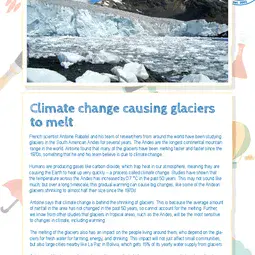
This is a kids' version of the EGU article: 'Climate change causing glaciers to melt'. It was written by Jane Robb and reviewed for scientific content by Lucy Clarke and Kathryn Adamson and for educational content by Phil Smith.
Translations
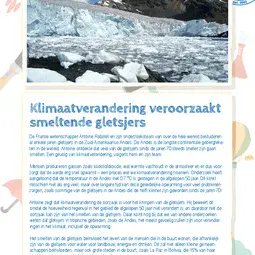
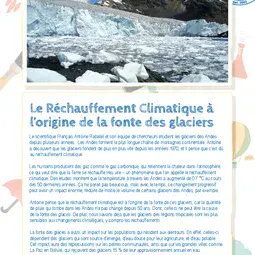
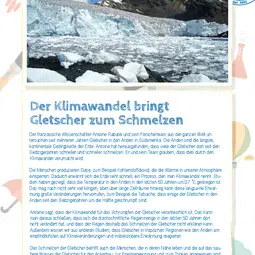
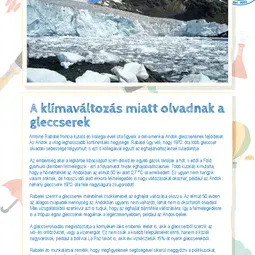
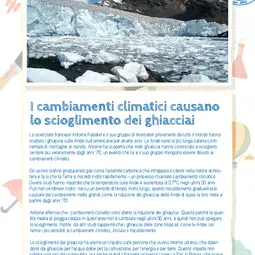
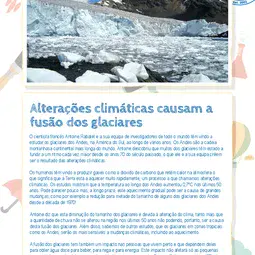
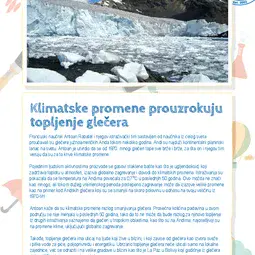
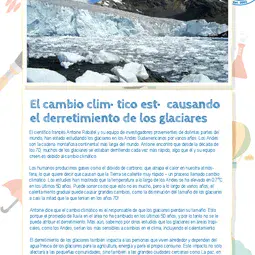
All English-language Planet Press releases are carefully edited, reviewed and proofed, by scientists, educators and EGU staff. Please note that once translated, Planet Press releases receive no further checks from EGU staff. For this reason, we cannot guarantee their accuracy, though we trust the quality of our voluntary translators and are grateful for their work.

